Camera traps have been a key part of the conservation toolkit for decades. Remotely triggered video or still cameras allow researchers and managers to monitor cryptic species, survey populations, and support enforcement responses by documenting illegal activities. Increasingly, machine learning is being implemented to automate the processing of data generated by camera traps.
A recent study published showed that, despite being well-established and widely used tools in conservation, progress in the development of camera traps has plateaued since the emergence of the modern model in the mid-2000s, leaving users struggling with many of the same issues they faced a decade ago. That manufacturer ratings have not improved over time, despite technological advancements, demonstrates the need for a new generation of innovative conservation camera traps. Join this group and explore existing efforts, established needs, and what next-generation camera traps might look like - including the integration of AI for data processing through initiatives like Wildlife Insights and Wild Me.
Group Highlights:
Our past Tech Tutors seasons featured multiple episodes for experienced and new camera trappers. How Do I Repair My Camera Traps? featured WILDLABS members Laure Joanny, Alistair Stewart, and Rob Appleby and featured many troubleshooting and DIY resources for common issues.
For camera trap users looking to incorporate machine learning into the data analysis process, Sara Beery's How do I get started using machine learning for my camera traps? is an incredible resource discussing the user-friendly tool MegaDetector.
And for those who are new to camera trapping, Marcella Kelly's How do I choose the right camera trap(s) based on interests, goals, and species? will help you make important decisions based on factors like species, environment, power, durability, and more.
Finally, for an in-depth conversation on camera trap hardware and software, check out the Camera Traps Virtual Meetup featuring Sara Beery, Roland Kays, and Sam Seccombe.
And while you're here, be sure to stop by the camera trap community's collaborative troubleshooting data bank, where we're compiling common problems with the goal of creating a consistent place to exchange tips and tricks!
Header photo: ACEAA-Conservacion Amazonica
An Environmental sciences and Management graduate from SUA, passionate and eager to drive change to the Environment, making World a better place for present and future generations.
- 0 Resources
- 3 Discussions
- 10 Groups
- 0 Resources
- 0 Discussions
- 5 Groups
- @thomasmutonhori
- | TM
Ecologist
- 0 Resources
- 0 Discussions
- 4 Groups
- 0 Resources
- 4 Discussions
- 4 Groups
Noé
Hi! I am Aurélie, a dedicated French ornithologist and engineer committed to biodiversity conservation. I am Program manager for the biodiversity of natural habitats' program in a French NGO called Noé.
- 0 Resources
- 0 Discussions
- 4 Groups
Luxembourg Institute of Science and Technology
Undertake and develop biodiversity monitoring

- 0 Resources
- 10 Discussions
- 4 Groups
- @donc
- | he/him
Product Manager trying to use their powers for good
- 0 Resources
- 0 Discussions
- 1 Groups
- @kosmakosv
- | he/him
Peace Corps Volunteer and Nature Enthusiast
- 0 Resources
- 4 Discussions
- 1 Groups
DIY electronics for behavioral field biology



- 1 Resources
- 49 Discussions
- 4 Groups
Wildlife technician and camera traps enthusiast
- 0 Resources
- 0 Discussions
- 5 Groups
Arribada Initiative
Director at Arribada, a UK-based conservation technology research & development organisation



- 2 Resources
- 95 Discussions
- 11 Groups

- 0 Resources
- 5 Discussions
- 3 Groups
The incumbent will develop models and metrics that can be used to shape conservation policy using multiple data sources including camera traps, movement data and citizen science concerning the diversity and...
23 April 2024
Careers
The Smithsonian National Zoo & Conservation Biology Institute is seeking a Program Manager to help coordinate multiple organizations in an effort to integrate movement data & camera trap data with global...
22 April 2024
The Smithsonian National Zoo & Conservation Biology Institute is seeking a Postdoctoral Research Fellow to help us integrate movement data & camera trap data with global conservation policy.
22 April 2024
Watch our interview with pioneering young Tanzanian vulture researcher Vainess Laizer! Her research investigating the breeding success of white-backed vultures in the western corridor of the Serengeti ecosystem using...
16 April 2024
Are you passionate about wildlife conservation and eager to contribute to meaningful research efforts? Lion Landscapes is seeking a dedicated and proactive Research Assistant to join their team.
11 April 2024
Article
You’re invited to the WILDLABS Variety Hour, a monthly event that connects you to conservation tech's most exciting projects, research, and ideas. We can't wait to bring you a whole new season of speakers and...
22 March 2024
The Smithsonian’s National Zoo and Conservation Biology Institute (SNZCBI) is seeking two postdoctoral fellows to engage more directly with identifying conservation metrics for vertebrate communities and populations.
14 March 2024
Catch up on the conservation tech discussions and events that happened during World Wildlife Day 2024!
7 March 2024
EcoAssist introduces a free African species identification model for camera trap images, capable of recognising 30 species.
5 March 2024
The primary focus of the research is to explore how red deer movements, space use, habitat selection and foraging behaviour change during the wolf recolonization process.
10 February 2024
Article
An update on @Alasdair and @adanger24's HWC project
11 January 2024
The Conservation Technology Laboratory within the Population Sustainability department is seeking two fellows for summer 2024.
9 January 2024
May 2024
event
October 2024
April 2024
event
| Description | Activity | Replies | Groups | Updated |
|---|---|---|---|---|
| [oops, the same reply got submitted twice and there doesn't seem to be a "delete" button] |
|
AI for Conservation, Camera Traps | 53 seconds ago | |
| Hi @zhongqimiao ,Might you have faced such an issue while using mega detectorThe conflict is caused by:pytorchwildlife 1.0.2.13 depends on torch==1.10.1pytorchwildlife 1.0.2.12... |
+6
|
AI for Conservation, Camera Traps, Open Source Solutions | 36 seconds ago | |
| We use the DJI M30T for this kind of work.For finding heat signals of animals under foliage check out this bit of Austrian UAV developement:You can use their open software on the... |
+17
|
Camera Traps, Drones | 4 hours 43 minutes ago | |
| Thanks, and that's a match! All these pictures are from a lab experiment and formated with AmphIdent. We took weekly belly pictures of several larvae. The aim of this google... |
|
Camera Traps, Data management and processing tools, Software and Mobile Apps | 1 day 5 hours ago | |
| Hi, this is pretty interesting to me. I plan to fly a drone over wild areas and look for invasive species incursions. So feral hogs are especially bad, but in the Everglades there... |
|
AI for Conservation, Camera Traps, Open Source Solutions, Software and Mobile Apps | 1 day 23 hours ago | |
| Hi everyone!@LashaO and @holmbergius from the Wild Me team at ConservationX Labs gave a superb talk at last month's Variety Hour,... |
|
AI for Conservation, Camera Traps | 6 days 5 hours ago | |
| Can't beat Dan's list! I would just add that if you're interested in broader protected area management, platforms like EarthRanger and SMART are amazing, and can integrate... |
|
Data management and processing tools, Camera Traps, Conservation Tech Training and Education | 6 days 14 hours ago | |
| Saul Greenberg is a great guy! He has made a few very useful videos regarding the Timelapse/Megadetector integration:https://grouplab.cpsc.ucalgary.ca/grouplab/uploads/... |
+14
|
Camera Traps | 1 week 1 day ago | |
| EcoAssist is an application designed to streamline the work of ecologists dealing with camera trap images. It’s an AI platform that... |
|
Software and Mobile Apps, AI for Conservation, Camera Traps | 2 weeks 6 days ago | |
| Hi @Alasdair Great to hear from you! Thanks for the comment and for those very useful links (very interesting). And for letting @Rob_Appleby know. I can't wait to hear... |
|
Emerging Tech, Camera Traps, Conservation Tech Training and Education | 3 weeks 3 days ago | |
| Hello everyone, I'm interested in gathering insights on how the behavior of different species impacts the development and efficacy of... |
|
Biologging, Acoustics, Camera Traps, eDNA & Genomics, Emerging Tech, Marine Conservation | 1 month ago | |
| Hi Andrew! Great to hear your friend, Scott working in Indonesia! I bet he is working on east region with lot of cool monitor lizards!I use Mavic 2 as well for my crocodile... |
|
Camera Traps | 1 month 3 weeks ago |
MegaDetector v5 release
20 June 2022 9:06pm
23 April 2024 10:38pm
I'm sorry, I don't use PyTorch-Wildlife; I recommend filing an issue on their repo. Good luck!
23 April 2024 10:38pm
[oops, the same reply got submitted twice and there doesn't seem to be a "delete" button]
Pytorch-Wildlife: A Collaborative Deep Learning Framework for Conservation (v1.0)
21 February 2024 10:30pm
26 February 2024 11:58pm
This is great, thank you so much @zhongqimiao ! I will check it out and looking forward for the upcoming tutorial!
17 April 2024 11:07am
Hi everyone! @zhongqimiao was kind enough to join Variety Hour last month to talk more about Pytorch-Wildlife, so the recording might be of interest to folks in this thread. Catch up here:
23 April 2024 9:48pm
Hi @zhongqimiao ,
Might you have faced such an issue while using mega detector
The conflict is caused by:pytorchwildlife 1.0.2.13 depends on torch==1.10.1pytorchwildlife 1.0.2.12 depends on torch==1.10.1pytorchwildlife 1.0.2.11 depends on torch==1.10.1
if yes how did you solve it, or might you have any ideas?
torch 1.10.1 doesn't seem to exist
Ecologist Postdoctoral Research Fellow
23 April 2024 4:32pm
Using drones and camtraps to find sloths in the canopy
18 July 2023 7:39pm
22 April 2024 8:31pm
Hi Frank! Actually I have not used it yet. It is shipped to our field site but I will soon get a chance to use it. We got it with the intention of finding arctic tundra bird nests. We also got a handheld thermal binocular. I expect the latter to be more convenient and fast to use.
22 April 2024 10:01pm
Ah, ... not many sloths in the arctic ;-)
Good luck with the drone and the binos. I sure would love to try those by the way.
23 April 2024 2:37pm
We use the DJI M30T for this kind of work.
For finding heat signals of animals under foliage check out this bit of Austrian UAV developement:
You can use their open software on the DJI remotes.
Greetings from the woods,
Robin
Program Manager: Integrating movement and camera trap data with international conservation policy
22 April 2024 10:16pm
Postdoc: Biologging & Camera Trap Data Integration
22 April 2024 10:10pm
Newt belly pattern for picture-matching
18 April 2024 3:57pm
19 April 2024 10:31am
19 April 2024 4:14pm
Hi Robin this is a great idea! Have been thinking about approaching the community for quiz questions. Will reach out to Xavier to ask if we can use it or if he wishes to run it on next Wednesdays VH
22 April 2024 11:27am
Thanks, and that's a match!
All these pictures are from a lab experiment and formated with AmphIdent. We took weekly belly pictures of several larvae. The aim of this google form is to validate (by comparing answers with the lab reference image base) picture-matching by human is reliable although the change of pattern can be verry quick at this life stage.
If validated there will be the need to improve existing pattern-matching solutions for in situ observations of larvae, for instance with ML and/or Human Learning (thanks Zooniverse)...
WILDLABS AWARDS 2024 - No-code custom AI for camera trap species classification
5 April 2024 7:00pm
10 April 2024 3:55am
Happy to explain for sure. By Timelapse I mean images taken every 15 minutes, and sometimes the same seals (anywhere from 1 to 70 individuals) were in the image for many consecutive images.
17 April 2024 5:53pm
Got it. We should definitely be able to handle those images. That said, if you're just looking for counts, then I'd recommend running Megadetector which is an object detection model and outputs a bounding box around each animal.
21 April 2024 5:19pm
Hi, this is pretty interesting to me. I plan to fly a drone over wild areas and look for invasive species incursions. So feral hogs are especially bad, but in the Everglades there is a big invasion of huge snakes. In various areas there are big herds of wild horses that will eat themselves out of habitat also, just to name a few examples. Actually the data would probably be useful in looking for invasive weeds, that is not my focus but the government of Canada is thinking about it.
Does your research focus on photos, or can you analyze LIDAR? I don't really know what emitters are available to fly over an area, or which beam type would be best for each animal type. I know that some drones carry a LIDAR besides a camera for example. Maybe a thermal camera would be best to fly at night.
Faces, Flukes, Fins and Flanks: How multispecies re-ID models are transforming Wild Me's work
17 April 2024 11:10am
Camera Trap storage and analyzing tools
16 April 2024 5:15pm
16 April 2024 7:17pm
I don't have an easy solution or a specific recommendation, but I try to track all the systems that do at least one of those things here:
https://agentmorris.github.io/camera-trap-ml-survey/#camera-trap-systems-using-ml
That's a list of camera trap analysis / data management systems that use AI in some way, but in practice, just about every system available now uses AI in some way, so it's a de facto list of tools you might want to at least browse.
AFAIK there are very few tools that are all of (1) a data management system, (2) an image review platform, and (3) an offline tool. If "no Internet access" still allows for access to a local network (e.g. WiFi within the ranger station), Camelot is a good starting point; it's designed to have an image database running on a local network. TRAPPER has a lot of the same properties, and @ptynecki (who works on TRAPPER) is active here on WILDLABS.
Ease of use is in the eye of the beholder, but I think what you'll find is that any system that has to actually deal with shared storage will require IT expertise to configure, but systems like Camelot and TRAPPER should be very easy to use from the perspective of the typical users who are storing and reviewing images every day.
Let us know what you decide!
17 April 2024 1:55am
Can't beat Dan's list!
I would just add that if you're interested in broader protected area management, platforms like EarthRanger and SMART are amazing, and can integrate with camera-trapping (amongst other) platforms.
InConversation: Starting a Conservation Technology Career with Vainess Laizer
 Esther Githinji
Esther Githinji
16 April 2024 1:34pm
Using the multivariate Hawkes process to study interactions between multiple species from camera trap data
15 April 2024 3:00pm
"We present the multivariate Hawkes process (MHP) and show how it can be used to analyze interactions between several species using camera trap data."
Integrating AI models with camera trap management applications
25 March 2024 7:47pm
9 April 2024 1:37am
Would also add zamba and Zamba Cloud into the list of tools for running AI models (the former being with Python code, the latter being with a GUI). For the reader at home (since I know Dan knows), these are tools for species classification on camera trap videos. We've got pretrained models trained on over 250,00 videos covering 32 African forest species, 11 European species, as well as a blank / nonblank detector.
There is also the ability to train your own models for new species or locations. And we're super excited to extend this custom model training functionality to support camera trap images thanks to our WILDLABS award (more details here).
13 April 2024 4:47am
Thanks Dan for explaining and clarifying, and Ed and all others for contributing. As a somewhat technical person (IT business consultant) with no formal environmental education, but with a passion to understand and protect the environment, this is a topic I've been exploring and struggling with...
There are really skilled technical experts in this community that love to design and improve solutions, but it's not always easy for potential end users to understand and use said solutions without significant learning curves. And often solutions are designed from a technical perspective, and does not always consider end users' level of experience, knowledge and actual on the ground needs. This is not just a problem in the concervation technology space, but overall tech industry.
To clarify this for myself, I would love to see a summary of how conservation tech solutions fit into a camera trap process that include the following areas - and especially which tools fit where:
- Plan/Design: scope, requirements, timeframes, data needs, overall outcome. Also influences the selection of tools to use in the overall process.
- Capture/execute : both hardware (cameras, audio recorders, sensors, etc), and software (managing hardware lifecycle tracking, capturing trail camera data e.g. image file management, etc) solutions
- Process/Analyse: solutions for initial processing/culling, detailed analysis, and anything classification related
- Present/Display: how best to communicate, display and present the data gathered, analysed and classified...
If there is a resource that already do this comparison and sumarization of tools' capabilities please help me find it - otherwise it might be topic to be explored further...
14 April 2024 7:46pm
Saul Greenberg is a great guy! He has made a few very useful videos regarding the Timelapse/Megadetector integration:
and a tutorial:
https://saul.cpsc.ucalgary.ca/timelapse/uploads/Videos/Video-TimelapseImageRecognitionGuide.mp4
Research Assistant, Lion Landscapes in Nanyuki
11 April 2024 9:49am
Comparing local ecological knowledge with camera trap data to study mammal occurrence in anthropogenic landscapes of the Garden Route Biosphere Reserve
9 April 2024 7:09pm
Combining camera traps and online surveys provided a more comprehensive understanding of mammal communities in anthropogenic landscapes, increasing both spatial coverage and the number of species sightings.
Online training workshop: camera trap distance sampling, 27-31 May 2024.
6 April 2024 4:00am
Mammal responses to global changes in human activity vary by trophic group and landscape
3 April 2024 4:52pm
These researchers used camera trapping as a lens to view mammal responses to changes in human activity during the COVID-19 pandemic.
EcoAssist - Free AI models for camera traps photos identification
3 April 2024 7:16am
Blind Spots in Conservation Tech Management in Remote Landscapes: Seeking Your Input
20 March 2024 10:51am
22 March 2024 9:48am
Hi @lucianofoglia
Thanks for sharing your thoughts with the community. What you've touched on resonates with a number of users and developers (looking at you @Rob_Appleby) who share similar concerns and are keen to address these issues.
As a beliver in open sourcing conservation technologies, to mitigate issues you've noted (maintenance of technologies / solutions, repairability, technical assistance to name but a few), really the only way to achieve this in my eyes is through the promotion of openness to enable a wide range of both technical and non-technical users to form the pool of skills needed to react to what you have stated. If they can repair a device, or modify it easily, we can solve the waste issue and promote reusability, but first they need access to achieve this and commerical companies typically shy away from releasing designs to protect against their IP that they keep in house to sell devices / solutions.
I would think for an organisation to achieve the same the community would need to help manufacturers and developers open and share hardware designs, software, repairability guides etc, but the reality today is as you have described.
One interesting conversation is around a kitemark, i.e a stamp of approval similar to the Open Source Hardware Association's OSHWA Certification), but as it's not always hardware related, the kitemark could cover repairability (making enclosure designs open access, or levels of openness to start to address the issue). Have a look at https://certification.oshwa.org/ for more info. I spent some time discussing an Open IoT Kitemark with http://www.designswarm.com/ back in 2020 with similar values as you have described - https://iot.london/openiot/
You may want to talk more about this at the upcoming Conservation Optimism Summit too.
Happy to join you on your journey :)
Alasdair (Arribada)
30 March 2024 3:57pm
Hi @Alasdair
Great to hear from you! Thanks for the comment and for those very useful links (very interesting). And for letting @Rob_Appleby know. I can't wait to hear from her.
Open source is my preference as well. And it's a good idea. But, already developing the tech in house is a step ahead from what would be the basic functional application of an organization that could manage the tech for a whole country/region.
I have witnessed sometime how tech have not added much to the efficiency of local teams but instead being an tool to promote the work of NGOs. And because of that then innovative technologies are not developed much further that a mere donation (from the local team's perspective). But for that tech to prove efficient, a lot more work on the field have to be done after. The help of people with expertise in the front line with lots of time to dedicate to the cause is essential (this proves too expensive for local NGOs and rarely this aspect is consider).
I imagine this is something that needs to come from the side closer to the donors and International NGOs. Ideally only equipment can be lend within a subscription model and not just donated without accountability on how that tech is use. Effectively the resources can be distributed strategically over many projects. Allowing to tech to be repurposed.
Sorry that I step down the technical talk, the thing is that sometimes the simplest things can make the most impact.
It would be good to know if any in the community that have spent considerable time working in conservation in remote regions, and have observed similar trends.
Thanks! Luciano
Applying Open-Source AI to Camera Trap Imagery
27 March 2024 4:34pm
How does behavior influence the use of technology for animal detection ?
22 March 2024 7:49pm
The Variety Hour: 2024 Lineup
22 March 2024 4:30pm
2 Postdoctoral Conservation Ecologist Positions at Smithsonian’s National Zoo and Conservation Biology Institute (SNZCBI)
 Smithsonian Institution
Smithsonian Institution
14 March 2024 7:18pm
Using citizen science image analysis to measure seabird phenology
13 March 2024 9:32pm
Our new paper uses data from the citizen science project, Seabird Watch (hosted on the Zooniverse platform; seabirdwatch.org), to measure seabird phenology. Volunteers marked birds in time-lapse images to investigate arrival and departure to/from the breeding grounds.
Free AI Camera Trap Model for European Fauna!
12 March 2024 12:33pm
EcoAssist has now incorporated the Deepfaune v1.1 species identification model for camera trap images, capable of recognizing 26 European species. The model is developed by Deepfaune initiative. More information is available at: https://www.deepfaune.cnrs.fr/.
Here's what you missed at World Wildlife Day 2024
7 March 2024 9:02pm
15 March 2024 2:42pm
EcoAssist - Free African species identification model for 30 species!
5 March 2024 5:10pm
1 April 2024 6:04pm
Canopy Camera Trap for Indonesian Lizards
27 February 2024 9:20pm
28 February 2024 1:18pm
Hi Andrew! Great to hear your friend, Scott working in Indonesia! I bet he is working on east region with lot of cool monitor lizards!
I use Mavic 2 as well for my crocodile research in place with dense canopy and yes it was tricky! I would suggest to try DJI Avata may be better to do this task. Or maybe try equip propeller guard on the Mavic?
Would be it possible for the drone setting up the rope and after that the camera lift up using rope and slap to your desire place? just an idea, but in OZ they use drone carrying long rope to caught the crocodile, when it caught, the drone will release the rope and shift to people to work.
Timelapse Infrared Camera Suggestions
14 February 2024 1:54am
24 February 2024 6:18am
I doubt there is an off the shelf solution. Likely you will have to build one. Again I think the FLIR leptons could be of value here.
@krasi_georgiev you have worked with Leptons before ? Is this something you are able to advise on ?
25 February 2024 1:11pm
Ah yes. I didn’t notice that. Indeed it’s “near infrared”, 850nm lighting.


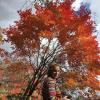







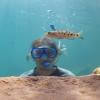





























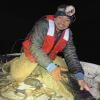








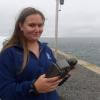




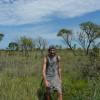






23 April 2024 9:43pm
Hi @dmorris,
might you have encountered this issue while working with Mega detector v5?
The conflict is caused by:pytorchwildlife 1.0.2.13 depends on torch==1.10.1pytorchwildlife 1.0.2.12 depends on torch==1.10.1pytorchwildlife 1.0.2.11 depends on torch==1.10.1if yes what solution helped?